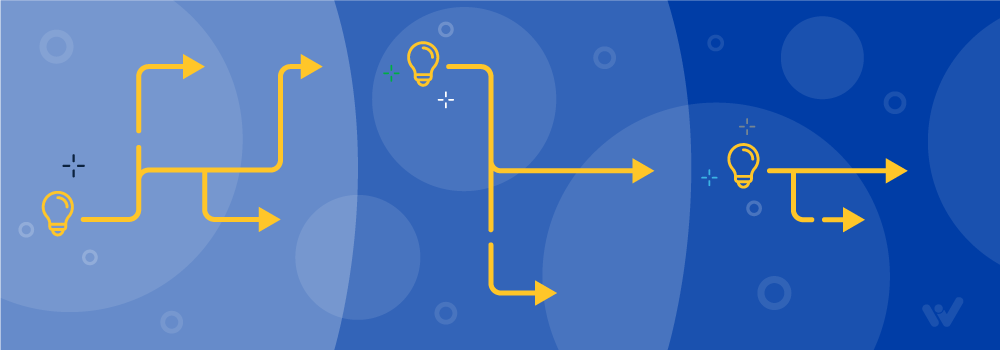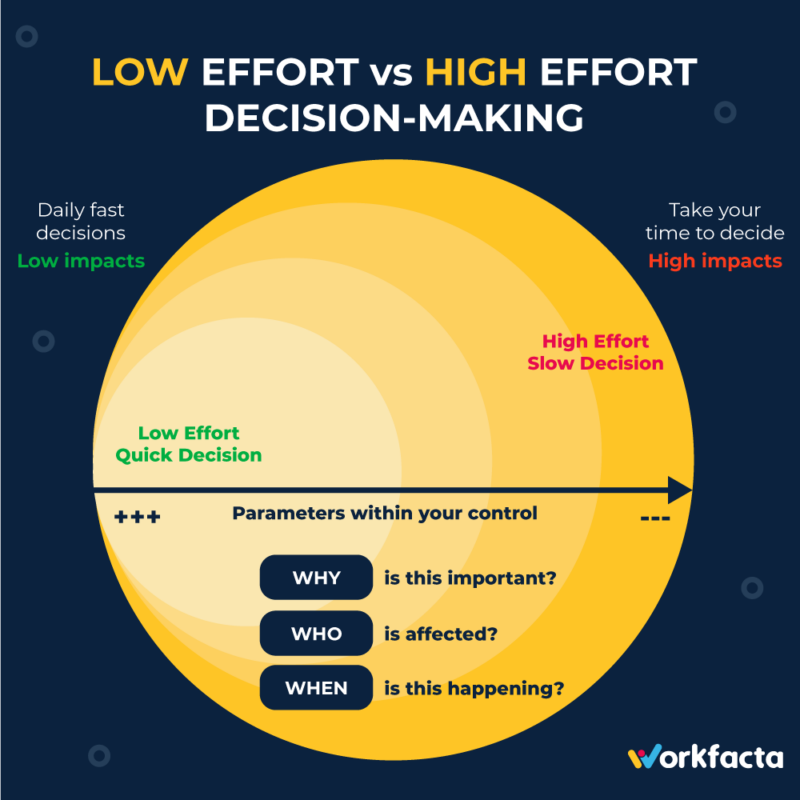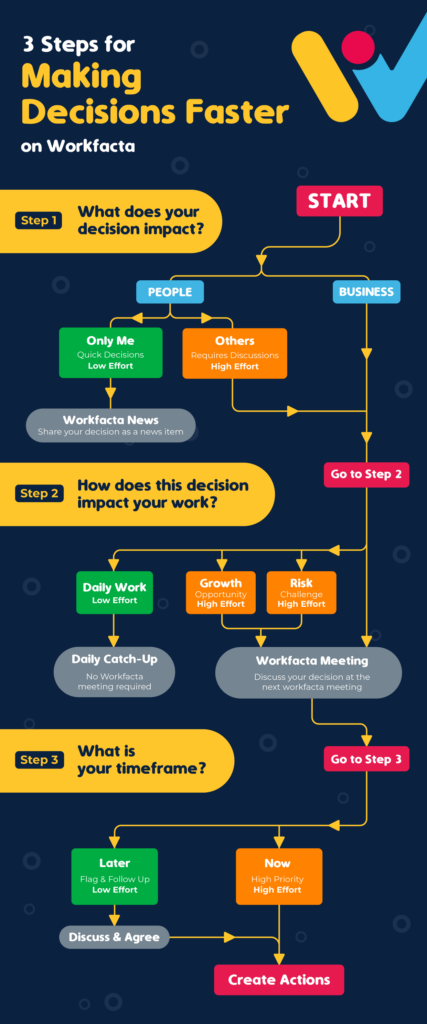
BUSINESS PERFORMANCE | DECISION MAKING | TEAM COLLABORATION | STRATEGY
How to Hone Your Decision-Making Skills, With a Practical 3-Step Approach
How to Hone Your Decision-Making Skills, With a Practical 3-Step Approach
 Catherine Lethbridge
Catherine Lethbridge
Published 05/05/2022
Decision-making skills are essential in all aspects of our lives. In business, it takes a wealth of experience and knowledge to make fast decisions or the right decisions.
Some complex decisions require having a good grasp of all the variables at play. Others are quick daily decisions that we do on autopilot. Either way, developing sharp decision-making skills is crucial to decide which actions lead to achieving goals, and which ones to ponder before reaching a conclusion.
“While nearly everyone would accept the premise about the connection between decisions and results…few companies look systematically at what gets in the way of good decision making and execution. And few take the actions necessary to improve how they make and execute their important decisions.”
– Marcia Blenko, Michael C. Mankins, Paul Rogers
Decide and Deliver: Five Steps to Breakthrough Performance in Your Organization
In this article, we define decision-making skills through the lens of low effort vs high effort and provide a practical framework to make informed decisions. Read on to find out how to hone your decision-making skills with a no-nonsense approach, and how Workfacta can support this approach.
. . .
Low effort vs high effort decision-making
Low Effort
Low effort decision-making is automatic, sometimes involuntary, and requires little brainpower. Low effort decision-making is risk-free and governed by repetitive, routine tasks. Usually, you are in control of all the parameters, or you have answers to all your questions.
Examples of low effort decision-making are grocery shopping, going to the movies, filling in timesheets, scheduling a meeting, following a step-by-step guide.
High Effort
High effort decision-making, on the other hand, is an involved effort and requires a more complex and thorough thought process. High effort thinking is used in unfamiliar situations, where the step-by-step process is unclear or complicated by multiple variables.
Examples of high effort decision-making are choosing your insurance policy, buying a house, acquiring another company, developing complex contracts, project management.
The More Control, The Faster The Decision
Making decisions requires prediction and judgement. Prediction assumes experience, and judgement assumes a certain level of confidence. After you’ve come across the same situation multiple times, your decision-making is abridged because you don’t need to analyse all the variables: you have developed experience, certainty, and confidence.
Armed with both, your decision-making skills are sharper, and deciding a course of action becomes a low-effort thought process.
The Bottom Line
The more control you have over the variables, the faster you can make a decision.
The least control you have over the variables, the more time you need to make decisions.

Low Effort vs High Effort Decision-Making
. . .
Your 3-steps approach to make decision faster and easier in Workfacta
Step 1. Know who this decision affects
Does your decision impact people or the business?
In Workfacta, use these features:
- Workfacta News
- Workfacta Meetings
- Discuss & Agree
Firstly, decide if your decision affects yourself only or the wider team and business.
In the latter, your decision is a high-effort exercise and will require a collaborative problem-solving discussion, where you lay out clearly:
- The reasons for discussion
- What you have discussed
- The solution proposed
- The Actions to achieve the outcome
Step 2. Know why this decision is important
How does this decision impact your team and business?
In Workfacta, use these features:
- Opportunities / Challenges / Discussions
- Workfacta Meetings
- Discuss & Agree
Your day-to-day tasks usually require a low effort thinking process and can be quickly solved and managed outside of Workfacta.
If your decision impacts others and the business, it will likely fall into these two categories:
- Growth Opportunities
- Risks or Challenges
Both categories require you to allocate some time and maybe some research to resolve. They involve a high-effort thinking level and will require a collaborative approach to problem-solving. In this case, capture and record your opportunity and challenge straight away. At your weekly meeting, your opportunity or challenge can be discussed at the right time during the session. Take your time to review the discussion item, collect the reasons for discussion and the key points that made up the solutions.
Step 3. Know when this decision must be made
What is your timeframe?
In Workfacta, use these features:
- Workfacta Meetings
- Discuss & Agree
- Actions
A prompt decision is important in decision-making. Sometimes, you need to pick up the phone and resolve immediately, but most of the time, your decision can be discussed at your weekly meeting.
Once you have captured your discussion item (opportunity or challenge) in the Platform, your team can see these items and start forming thoughts about how to solve them. At the next weekly meeting, no one will start thinking from cold and can contribute to the problem-solving discussion with thought-through inputs. Also, you can tackle all these discussions according to the levels of priority you’ve assigned to the items: high, medium and low.
Once discussed, you can assign actions and a deadline to the team members responsible for the outcomes. These actions appear automatically in their action list and in the meeting agenda for the following week.
. . .
Last thoughts: Make your decisions systemic
“Analytics are even more effective when they have been embedded in automated systems, which can make many decisions virtually in real time.” – HBR
Business leaders rely on common sense, data, research and now Ai to make decisions. However, one thing they fail to do is systemise and document their process to enable their teams to make smarter, faster decisions. This structured approach to decision-making is especially useful during times of crisis. With the COVID-19 pandemic, people want to be more autonomous, and more involved in decisions that affect their work. Empowering your employees and teams to make decisions is a leadership opportunity that you should take advantage of.
- Automatically record your decisions
- Embed data and analytics in your decision-making
- Learn to collaboratively problem-solve
- Be disciplined and intentional in your decision-making process
- Train your team to make decisions
Make it easy for yourself and your teams to make better and faster decision: try Workfacta disciplined meetings and decision-making features. All your decisions are recorded and archived. The new feeds feature also record all the contextual elements that explain the decision process.


